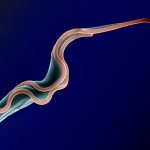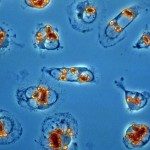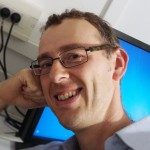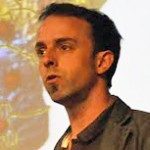Link to Pubmed [PMID] – 24811325
Mol. Microbiol. 2014 Jul;93(1):80-97
During its life cycle, the protozoan pathogen Leishmania donovani is exposed to contrasting environments inside insect vector and vertebrate host, to which the parasite must adapt for extra- and intracellular survival. Combining null mutant analysis with phosphorylation site-specific mutagenesis and functional complementation we genetically tested the requirement of the L. donovani chaperone cyclophilin 40 (LdCyP40) for infection. Targeted replacement of LdCyP40 had no effect on parasite viability, axenic amastigote differentiation, and resistance to various forms of environmental stress in culture, suggesting important functional redundancy to other parasite chaperones. However, ultrastructural analyses and video microscopy of cyp40-/- promastigotes uncovered important defects in cell shape, organization of the subpellicular tubulin network and motility at stationary growth phase. More importantly, cyp40-/- parasites were unable to establish intracellular infection in murine macrophages and were eliminated during the first 24 h post infection. Surprisingly, cyp40-/- infectivity was restored in complemented parasites expressing a CyP40 mutant of the unique S274 phosphorylation site. Together our data reveal non-redundant CyP40 functions in parasite cytoskeletal remodelling relevant for the development of infectious parasites in vitro independent of its phosphorylation status, and provide a framework for the genetic analysis of Leishmania-specific phosphorylation sites and their role in regulating parasite protein function.





